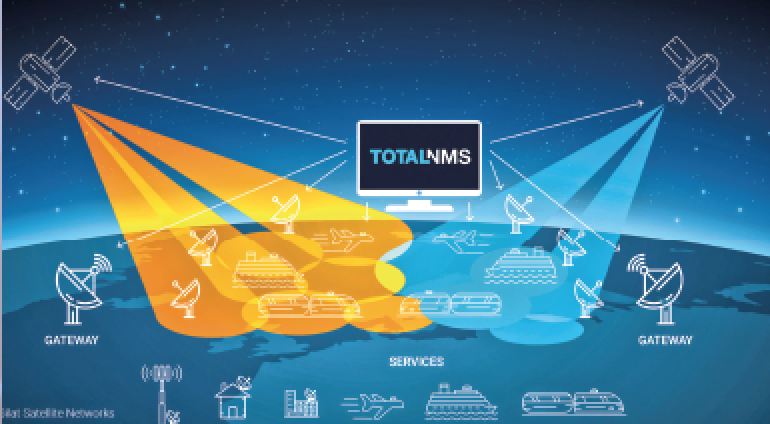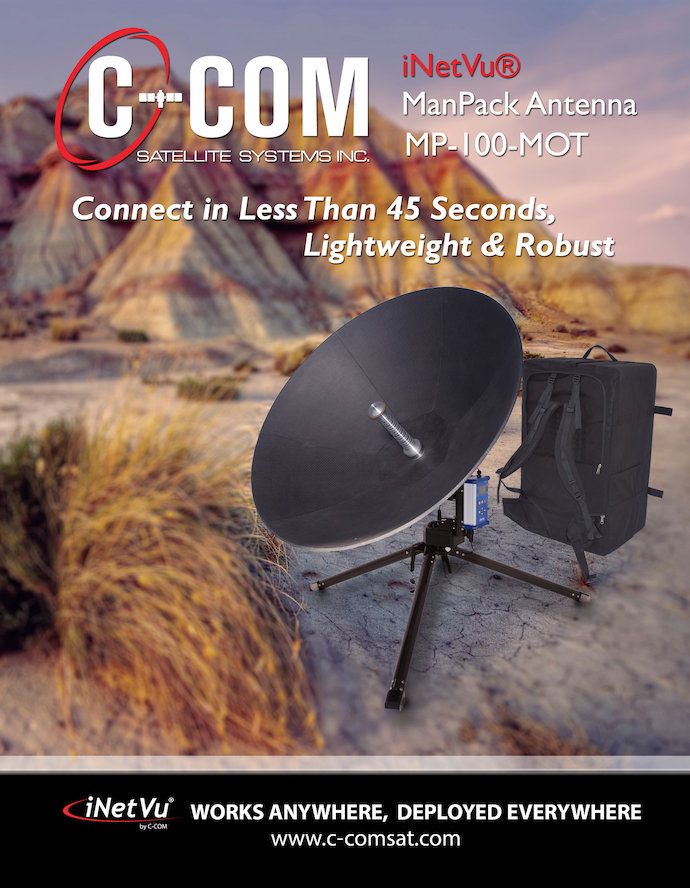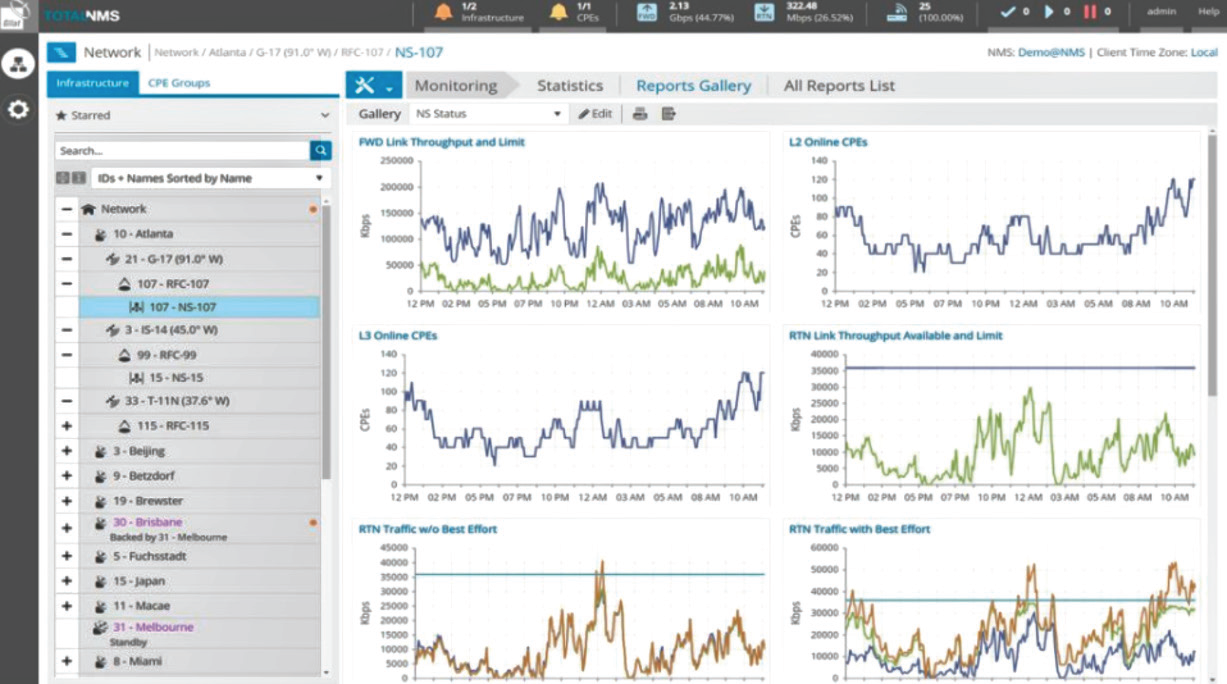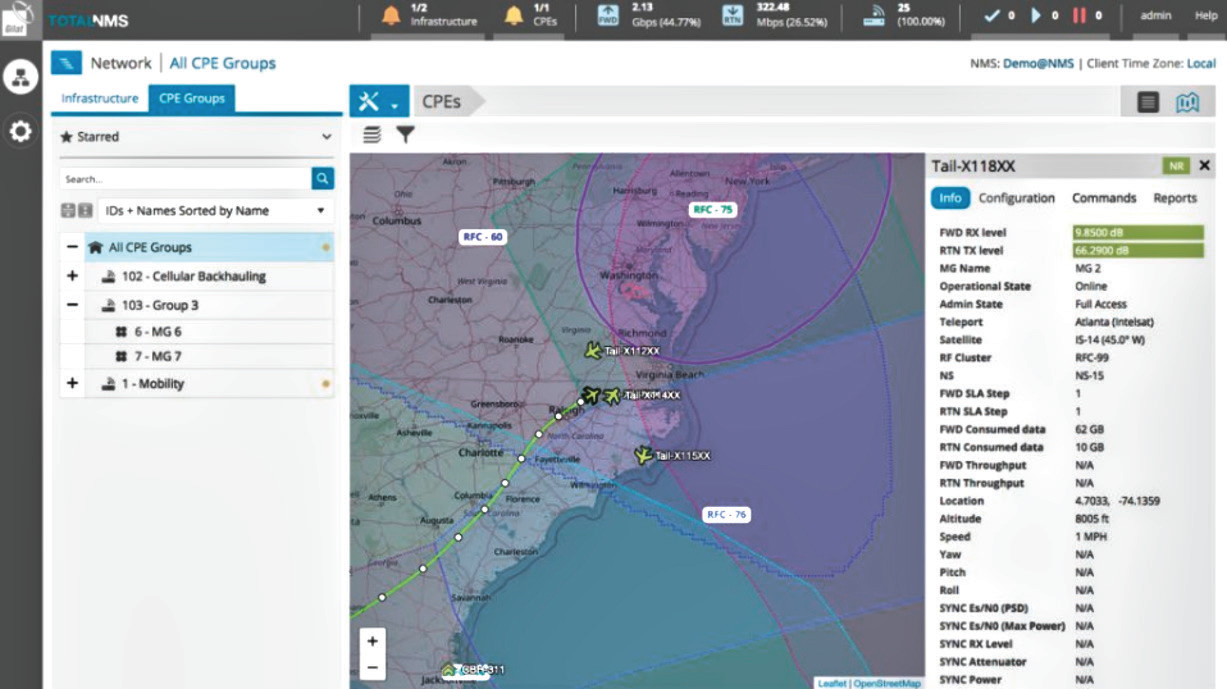The use of satellite communications (SATCOM) is far from being new; while most of us don’t remember the launch of Sputnik in 1957, that was the beginning of a technological revolution that continues today. During the last 60 plus years, the SATCOM industry has continued to evolve with expanding use cases, better cost efficiencies and a far greater impact on bridging the digital divides around the world.

A single VSAT platform that can deliver all of a network operator’s services is a valuable commodity, particularly as VSAT communications grow in scope within markets that include: Mobility, Backhaul, Consumer and Enterprise. To meet this crucial need, Gilat developed the multi-application SkyEdge II-c platform. This high-performance platform enables satellite service providers to support any market.
Today, satellites are providing a host of voice, data and broadcast solutions that couldn’t have been imagined in the last century. This convergence is driving increased demands on the network to deliver uninterrupted availability, reliability and security. As more mission critical applications become dependent on the network, tolerance for network problems approaches zero. As the adoption of SATCOM networks continue to grow, so, do, the challenges of managing them.
With Growth Comes Complexity
Today’s satellite networks are more powerful and capable than ever before. However, as networks become more complex — with potentially thousands of fixed and mobile customer sites spanning multiple gateways, satellites and beams — managing them becomes more and more challenging.
Such sophisticated networks enable more diverse services, leading to much more complex network management. Operators need a tool that will simplify their operation, reduce their costs and improve their customers’ experience.
To meet these additional needs, Gilat created our proprietary NMS, TotalNMS, key component of our SkyEdge II-c platform.
Digital Transformation
Since World War II, a large portion of defense industry spending have been driven by technology. Throughout the second half of the 20th century, technology- based defense grew more prevalent and became the best approach to solve security challenges — at least for the larger, more developed military spenders.
The quest for technological superiority and innovation makes sense when armed forces are trying to preserve and reinforce their strategic advantage. The Digital Transformation of the military continues to shape the future of global security.
Seamless collaboration and communication are crucial to helping defense agencies realize a modern way of working and managing themselves more effectively; sharing vast amounts of critical information (including voice, data and video) in real time. Such makes military maneuvers more efficient, effective and resilient while significantly reducing the chances of loss of life.
One Smart System For Scalable Networks
Task-Based Interface
To manage networks effectively, today’s operations team members have highly specialized roles and tasks. We designed TotalNMS to address REAL operator needs to improve their productivity. First, we divided the interface into two major domains –Network Infrastructure and Customer Equipment – to match your team member’s area of expertise. Second, we divided each domain into the three most common operator activities – Troubleshooting, Configuration and Monitoring – so that daily workflows can be easily completed in a fraction of the time.
Agile Network Configuration
With TotalNMS’ service-oriented approach, the network is configured by entering the satellite service characteristics rather than configuring each sub-system individually. This process dramatically simplifies network setup and modification. TotalNMS simplifies service provisioning by using configurable profiles for Broadband Internet, Enterprise, Mobility and Backhauling services. Each service is configured once and then assigned to customer equipment. This approach lets operators be especially agile and responsive to meet customer demands.
Effective Service Assurance Once the service is up and running, it must be monitored. Our dashboard keeps operators up to date, allowing them to respond quickly to any issue. When a failure occurs, an alarm indicates the source of the problem with a quick link to
the relevant data. Real-time and historical performance monitoring deliver deep visibility into network utilization statistics and service KPIs – optimizing resource usage and keeping customers satisfied with an entire range of SLAs.
With TotalNMS maps, the geographically based behavior of mobility services is easily defined and modified. Parameters include VNO service boundaries, areas where transmission is not allowed and the right place to switch between overlapping beams. These layers together with the terminal’s most relevant information are overlaid right on the map. The ability to track a mobility terminal’s status throughout the changing conditions of its route enables operators to optimize its service quality at all times.
Flexible Wholesale Business Models
TotalNMS provides a carrier-grade wholesale service portfolio that flexibly accommodates various VNO needs. Some may want their wholesale bandwidth specifically defined per beam, while others may prefer one global bandwidth pool flexibly utilized over multiple satellites and beams. And some may even wish to run and manage their own dedicated hub hardware. With TotalNMS, operators can easily create and monitor all these services, letting their VNOs manage their network as they see fit.
Facilitated Process Automation
TotalNMS facilitates the automation of service provisioning, service assurance and billing processes. By leveraging SDN and NFV technologies, Gilat’s SkyEdge II-c and TotalNMS provide for a fully orchestrated programmable network. This intelligent network enables operators to dynamically provision network capacity on demand, automatically support network diversity and efficiently manage mobility satellite bandwidth. With this solution in hand, network operators are now ready to face the higher levels of flexibility and agility required by advanced next generation applications and services.
Always-On Service Availability
In addition to the built-in redundancy of SkyEdge II-c and TotalNMS, the multi-site distributed architecture supports the optional deployment of a secondary gateway, datacenter or NOC to achieve higher levels of availability. With fast and reliable switchover to geographically diverse locations, all services and operations are protected from extreme weather conditions or natural disasters at the primary location. This modular architecture enables operators to choose different levels of availability based on service priority and budget.
Unified and Centralized TotalNMS
TotalNMS includes the following key attributes:
• Network Dashboard — a comprehensive set of network indicators providing real time and trending information on network throughput, utilization, and alarms
• One-Click Management — an intuitive GUI, with easy- to-use configuration tools and advanced diagnostic capabilities, providing effortless provisioning and troubleshooting for networks of any size
• Global User Access — standard web interface allowing access from any PC connected to the secured management network
• Customized User Administration — flexible and highly granular mechanism, enabling user permissions settings according to VNO service model and individual job function
• VNO Management (TotalVNO) — full support for a variety of VNO service models, providing VNOs with the capability to independently configure and monitor their own network.
• Rich Northbound Interface — comprehensive API to the operator’s operational and business environment, enabling simple automation of service assurance and activation processes
• Robust Accounting — detailed data usage records are delivered to the OSS/BSS, ensuring accurate service ratings and billing of end-customers
Conclusion
TotalNMS gives network operators all the tools and information they need for easier and more effective management of their networks – no matter how large or complex.
By all indicators, the current decade will be a very exciting time for the satellite industry. We will see new satellite constellations and increasing demand for network services for key applications and verticals. These new services will have complex requirements and their own set of challenges.
Selecting the correct ground segment partner with an advanced network management system will be increasingly more important to meet the many challenges and complex network requirements of future satellite systems and of new key applications that will be their driving forces.

Author Ravit Kishon Ben-Zuk joined Gilat in 2009 as Product Manager for Network Management Systems and UX/UI. Ravit is responsible for defining Gilat’s TotalNMS marketing requirements and designing its user experience. Prior to joining Gilat, Ravit worked as Director of Product Management at ADC Telecommunications. She received a BA in mathematics and computer science from Haifa University and MSC in Operations Research from NYU Tandon.




